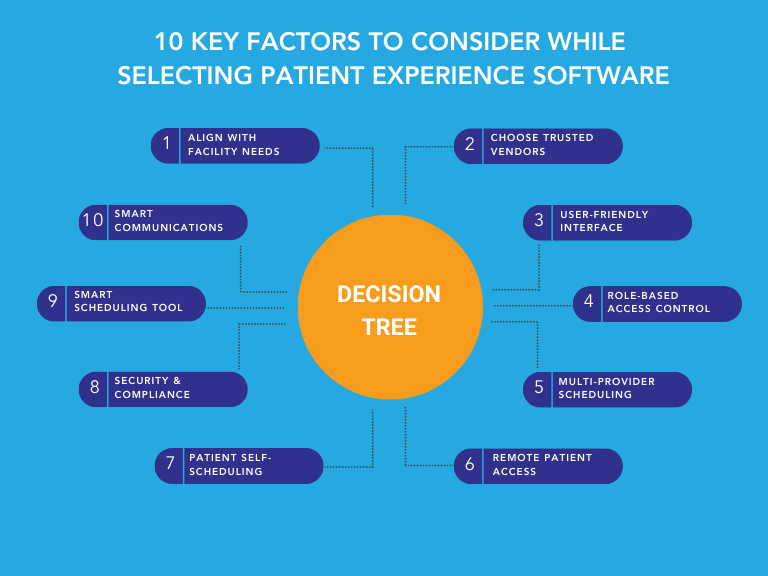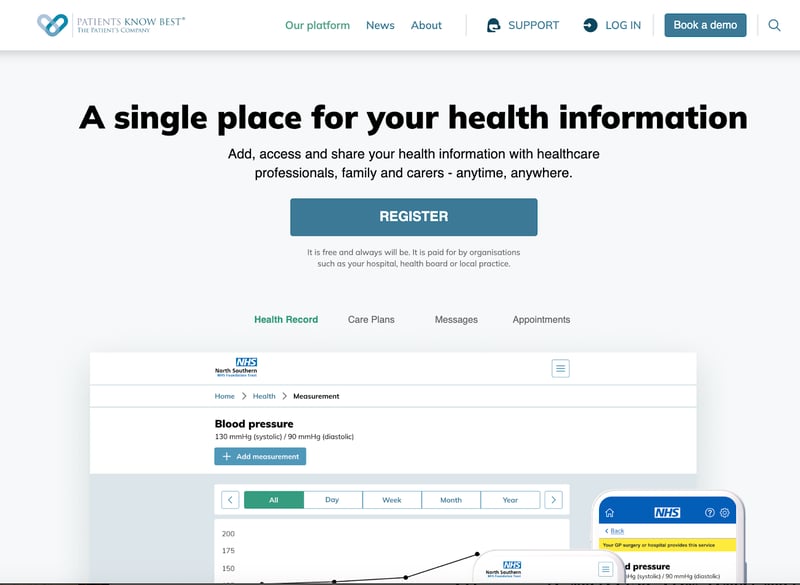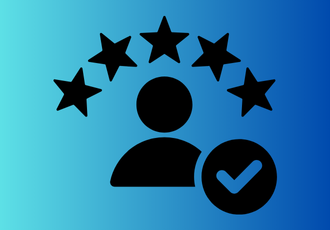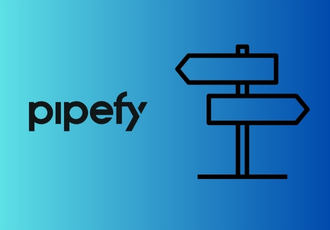Healthcare has made significant advances, but the patient experience often falls short, with issues like repeated paperwork, long waits, and hard-to-access results.
In fact, 71% of patients report frustration with their healthcare experiences, especially with scheduling and impersonal visits.
Better care goes beyond treatment—it’s about simplifying the entire journey. That’s where the right patient experience software comes in. It can streamline check-ins, improve communication, and reduce administrative burdens for patients and clinicians.
This guide comprehensively explores nine top patient experience software options to help you choose the best fit.
What is Patient Experience Software?
Patient experience software is a digital solution designed to improve how patients interact with healthcare providers across their entire care journey—from appointment scheduling and check-in to post-treatment follow-up.
It helps streamline communication, personalize care, gather feedback, and reduce administrative burdens for both patients and staff. Besides, it gives providers a complete view of each patient's journey and needs for a smoother, more personalized healthcare experience.
What Are The Types of Patient Experience Solutions?
 6 Types of Patient Experience Solutions
6 Types of Patient Experience Solutions
The following are the six major types of patient experience solutions:
-
Feedback collection tools: Gathers real-time patient feedback through surveys and reviews.
-
Telehealth platforms: Provide virtual visits and remote care for improved access and convenience.
-
Electronic health record (EHR) software: Digitizes and centralizes patient records, thereby enhancing accuracy, speed, and safety.
-
Patient engagement software: Improves patient engagement with reminders, secure messaging, portals, and education.
-
Practice management software: Streamlines daily operations like appointments, scheduling, billing, claims, and registration.
-
Remote patient monitoring (RPM) systems: Monitor patient health remotely using wearables or connected devices.
10 Key Factors To Consider While Selecting A Patient Experience Software

10 key factors to consider while looking for a patient experience software
1. Align with your facility's needs
Assess your facility’s size, workflows, and patient volume. Identify gaps like scheduling, billing, or follow-ups.
2. Trusted vendor and support
Working with trusted vendors ensures long-term reliability and support. Look for vendors with proven experience in healthcare.
3. Intuitive, easy-to-use interface
An intuitive, easy-to-navigate interface is essential for both staff and patients. Complex systems can create friction and decrease adoption rates.
4. Role-based access control
Protecting sensitive patient data is a top priority. Role-based access control ensures that only authorized staff can access certain information.
5. Unified multi-provider scheduling
With a unified scheduling system, patients can easily book appointments across multiple providers or departments. This reduces scheduling conflicts and administrative overhead.
6. Remote access for staff
Staff should be able to update schedules or view info on the go.
7. Patient self-scheduling
Allowing patients to schedule, reschedule, or cancel appointments independently enhances convenience and reduces administrative burden.
8. Security and compliance
Ensure the software meets regulatory standards like the General Data Protection Regulation (GDPR) and Health Insurance Portability and Accountability Act (HIPAA), including encryption and audit logs.
 Support compliance with AI-powered compliance automation
Support compliance with AI-powered compliance automation
9. Smart scheduling
Automated scheduling tools help reduce no-shows, optimize provider availability, and fill gaps in your schedule.
10. Communication tools
Effective patient experience software should include secure messaging, automated notifications, and real-time updates to keep patients informed and engaged throughout their care journey.
Top 9 Patient Experience Software
We have compiled a curated list of the top patient experience software to help you determine the right one for your needs.
|
Patient Experience Software |
G2 Ratings |
Staff Empowerment |
Patient-Centered Design |
Integration with the NHS app |
Customization Flexibility |
|
FlowForma |
Yes |
Yes |
Yes |
Yes |
|
|
Patients Know Best |
No |
Yes |
Yes |
No |
|
|
Epro |
Unavailable |
Yes |
No |
Yes |
Yes |
|
Capita |
No |
Yes |
Yes |
Yes |
|
|
Feedtrail |
Unavailable |
No |
Yes |
No |
No |
|
Orion Health |
Unavailable |
No |
No |
Yes |
Yes |
|
NexHealth |
No |
Yes |
No |
No |
|
|
DemandHub |
No |
Yes |
No |
Yes |
|
|
SimplePractice |
Yes |
Yes |
No |
Yes |
1. FlowForma

FlowForma AI-led process automation platform
FlowForma is an all-in-one automation platform that addresses the unique challenges of the healthcare sector, including institutions like the NHS in the UK.
By allowing healthcare professionals to automate complex workflows without the need for coding expertise, FlowForma transforms the way patient care is managed.
It eliminates outdated systems and offers fast, clinician-friendly digital workflows that streamline critical processes such as patient referrals, discharge planning, and administrative tasks.
With Copilot, users can create and deploy both simple forms and complex workflows with Copilot, as demonstrated by Blackpool Teaching Hospitals NHS Trust, which automated 70 processes, saving time and improving accuracy.
This seamless digital experience not only boosts operational efficiency but also directly improves the patient journey.
Key Features of FlowForma
- AI capabilities: FlowForma’s AI innovations like Copilot, Agent, and Summarization further accelerate and simplify healthcare automation processes, saving time and boosting efficiency.
- No-code workflow automation: Allows healthcare professionals to easily create and automate workflows without any coding knowledge.
- Automated document generation: Automate the creation of accurate documents like care plans and referral letters, improving communication with patients.
- Real-time process tracking and alerts: Provides real-time visibility into processes, allowing staff to monitor the progress of patient-related tasks and receive instant alerts for any delays or issues that may arise.
- Approved NS vendor: Listed vendor on the G-Cloud 13 Framework, N365 and NHS London Procurement Partnership.
- Regulatory compliance: Fully ISO Certified under ISO 27001 Certification Europe.
FlowForma’s Pros
- Easy to use with a user-friendly interface
- Cost-effective and transparent pricing
- AI-driven capabilities to automate processes 10X faster
- Proven track record in the NHS
- Adheres to regulatory compliance, such as HIPAA, GDPR, and ISO
FlowForma’s Cons
- Advanced customizations may need external technical support
- Need to be using SharePoint Online and/or Office 365
FlowForma’s Pricing
FlowForma has transparent pricing. It offers three pricing plans:
 FlowForma’s tiered pricing modules
FlowForma’s tiered pricing modules
Try FlowForma free for 7 days and experience the FlowForma advantage firsthand. It simplifies care with automated, patient-centric workflows.
2. Patients Know Best

Patients Know Best’s digital patient management platform
Patients Know Best centralizes data from hospitals, GPs, and social care into one personal health record controlled by the patient.
Patients Know Best Key Features
- Complete, real-time patient records from all care providers
- Current and historical health information for accurate assessments
- Long-term conditions are monitored remotely with real-time symptom tracking
- Online consultations with secure messaging and file-sharing
Patients Know Best’s Pros
- Centralizes patient data from multiple care providers
- Enables remote monitoring and symptom tracking
- Easy access to health records for patients
Patients Know Best’s Cons
- Limited functionality with only appointment letters visible
- Privacy concerns due to unauthorized record access
Patients Know Best’s Pricing
Does not disclose its pricing publicly
3. Epro
 Epro’s unified digital health platform
Epro’s unified digital health platform
Epro’s AI-powered speech and dictation tools reduce documentation time and support real-time clinical decision-making. It also captures and electronically stores primary care referrals for easy access.
Epro’s Key Features
- Routes referrals electronically and supports triage and task management across multiple sources
- Manages drug history and allergies, integrated with external systems for better coordination
- Tracks clinical outcomes and patient activity with AI-driven tools for accurate reporting and coding
Epro’s Pros
- Consolidates clinical systems and paper processes into one platform
- Customizable to fit specific clinical workflows
Epro’s Cons
- Steep learning curve
- Customization can delay the rollout
Epro’s Pricing
Epro does not disclose its pricing publicly
4. Capita
 Capita’s NHS-centric services platform
Capita’s NHS-centric services platform
Capita's virtual care hub provides 25+ operational services to ease non-clinical workloads, offer sustainable patient care, and manage ongoing engagement with AI-driven relationship tools.
Capita’s Key Features
- Multi-channel platform integrating digital, video, and phone consultations
- Behavioral science tools to analyze patient attitudes and behavior
- Integrated clinical content and educational resources
Capita’s Pros
- Intuitive with multiple customizable options
- AI and data-driven features enhance accuracy and patient safety
Capita’s Cons
- Integration with existing systems requires technical support
- Delayed support response
Capita’s Pricing
Capita does not disclose its pricing publicly
5. Feedtrail
 Feedtrail’s patient engagement platform
Feedtrail’s patient engagement platform
Feedtrail enables real-time patient feedback collection during or immediately after care. Powered by AI insights, it facilitates personalized outreach, identifies key issues early, and drives continuous improvements throughout the patient journey.
Feedtrail’s Key Features
- Intelligent analytics to identify trends, issues, and root causes
- Actionable insights categorized by department, provider, or location
- Employee engagement tools to integrate staff feedback into the experience strategy
Feedtrail’s Pros
- Timely, in-the-moment improvements
- Personalize care plans based on specific needs
- Connects staff and patient feedback
Feedtrail’s Cons
- Requires active staff participation
- Custom survey setup needs onboarding or training
Feedtrail’s Pricing
Feedtrail does not disclose its pricing publicly
6. Orion Health Amadeus Digital Care Record
 Orion Health Amadeus Digital Care Record’s patient data management platform
Orion Health Amadeus Digital Care Record’s patient data management platform
Orion Health Amadeus Digital Care Record unifies patient data from multiple systems into a centralized view, offering personal, shared, and organizational patient tracking lists with customizable views.
Orion Health Amadeus Digital Care Record’s Key Features
- Role-based access and permissions for shared data coordination
- Filters, favorites, quick comments, and bulk actions for better list management
- Secure and designed for scalability
Orion Health Amadeus Digital Care Record’s Pros
- Full view of patient history and care pathways
- Seamless integration and easy to use
- Scalable for large care networks
Orion Health Amadeus Digital Care Record’s Cons
- Lacks proper usability
- Limited and paid access with shared lists
Orion Health Amadeus Digital Care Record’s Pricing
Orion Health Digital Records does not disclose its pricing publicly
7. NexHealth
 NexHealth’s appointment reminder and feedback collection feature
NexHealth’s appointment reminder and feedback collection feature
NexHealth’s platform easily integrates with practice management systems, allowing patients to view availability, schedule appointments, complete forms, make payments, and book follow-up visits.
NextHealth’s Key Features
- Real-time online scheduling synced with EHR systems and automated appointment reminders
- Digital intake forms automatically sync with patient records
- Patient portal offering access to medical records and secure communication
NextHealth’s Pros
- Easy integration and implementation processes
- Customizable automated reminders and notifications
NextHealth’s Cons
- Cumbersome navigation
- Poor customer support
NextHealth’s Pricing
NexHealth offers custom pricing based on user requirements.
8. DemandHub
 DemandHub’s unified patient and staff chat inbox platform
DemandHub’s unified patient and staff chat inbox platform
DemandHub offers patient experience tools like online scheduling and automated reminders, consolidating communications into a single inbox to prevent missed leads.
DemandHub’s Key Features
- Review and reputation management tools to collect and display reviews
- Online payment processing with one-click payment options
- Team chat for internal communication
DemandHub’s Pros
- Easy-to-use interface
- Centralized communication through a unified inbox
DemandHub’s Cons
- No customization facility for web chat bots (source)
- Glitches affect incoming notifications (source)
DemandHub’s Pricing
DemandHub does not disclose its pricing publicly
9. SimplePractice
 SimplePractice’s digital practice management software
SimplePractice’s digital practice management software
Alt-text: SimplePractice's overview as a leading practice management software
SimplePractice’s all-in-one platform for scheduling, billing, documentation, and telehealth, offers customizable options for easy calendar management and automated appointment reminders.
SimplePractice’s Key Features
- ePrescribe for secure medication management
- Customizable documentation and treatment notes
- Client portal for appointment bookings and form submissions
- Insurance verification, billing, and claim management
- Analytics and reporting for practice insights
SimplePractice’s Pros
- All-in-one platform with multiple use cases
- Intuitive user interface s
SimplePractice Cons
- Primarily designed for behavioral health professionals
- High prices for small-business owners
SimplePractice’s Pricing

What Makes FlowForma The Best Patient Experience Software?
FlowForma is a no-code business process automation tool that offers a range of features that can significantly improve the patient experience in healthcare.
 Infographic showing why organizations choose FlowForma for better patient experiences
Infographic showing why organizations choose FlowForma for better patient experiences
Below are key reasons why it is widely adopted in healthcare settings:
1. Real-time process automation with AI Copilot
FlowForma’s AI Copilot allows clinicians and administrators to build and automate complex processes in real time without coding. For example, patient onboarding and scheduling workflows can be created in just a few steps.
 Feedback from the NHS, one of FlowForma's customers.
Feedback from the NHS, one of FlowForma's customers.
2. Integration with existing systems
FlowForma is designed to integrate smoothly with existing healthcare infrastructures. This interoperability ensures that digital transformation efforts do not require complete system overhauls, making it a cost-effective solution for healthcare organizations aiming to modernize their processes incrementally.
For example, a leading European healthcare institution successfully transitioned from paper-based workflows to streamlined, clinician-driven digital processes—enhancing efficiency while maintaining continuity of care.
3. Pre-built healthcare templates for rapid deployment
FlowForma’s Healthcare Process Accelerator offers ready-to-use templates for automating key patient-facing processes like referrals, admissions, and incident management. Fast deployment cuts wait times, improves communication, and ensures smoother, less stressful care experiences.
4. Custom form builder
FlowForma’s built-in form builder allows healthcare staff to quickly create tailored digital forms for various patient-related processes—such as intake, consent, discharge summaries, or feedback collection—without the need for coding.
These forms can be customized to align with clinical workflows and ensure accurate data capture at every stage of the patient journey.
5. Unified source of truth
All patient experience data—including surveys, feedback, complaints, and compliments—are centrally stored in one location, ensuring consistency and easy access.
6. Approved vendor
FlowForma is a listed vendor on the G-Cloud 13 Framework, N365 and NHS London Procurement Partnership
Ready to simplify the patient care experience? Book a demo to watch FlowForma in action.
 By
By 




